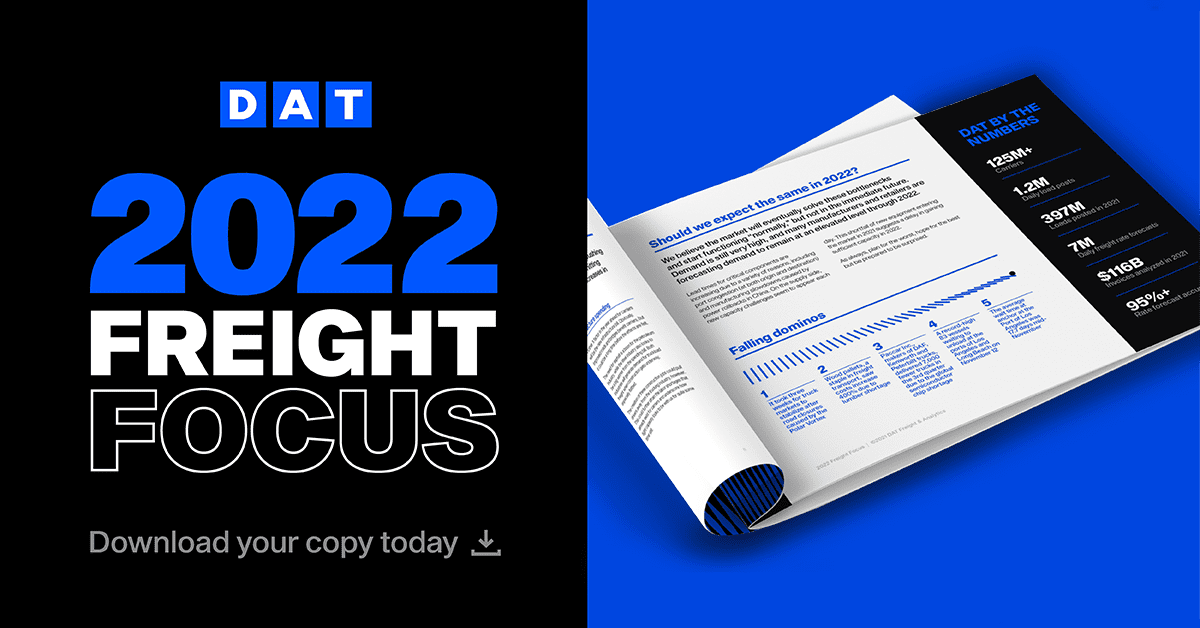Trucks are in huge demand, with historically tight capacity pushing truckload rates to record highs. But inflationary forces are hitting both sides of the ledger for motor carriers, with major increases in the cost of doing business.
How can carriers navigate the currently tumultuous market while planning for upcoming corrections?
Get your copy of 2022 Freight Focus: The Transportation Logistics Outlook to get the full report on how to navigate these volatile times.

Control your costs
Prices for fuel, insurance and tires have all increased dramatically. Parts shortages have also made truck maintenance expensive and sometimes unavailable.
Meanwhile, the global microchip shortage has drastically reduced the availability of new trucks, with record orders for new vehicles creating a major backlog. And just as we’ve seen in truckload rates, anytime there’s a shortage in supply and demand is high, prices skyrocket.
The average price for a used 2016 model year truck has risen more than 128% compared to last year. For the first nine months of 2021, new tractors sold at prices 87% higher than the same time last year. On average, buyers paid $15,000 more per tractor.
High rates in 2021 attracted an unprecedented number of new applications for motor carrier authority. In 2022, high costs will test these new entrants. And as costs per mile climb, the industry will have to adjust to new baselines associated with the price of moving freight.
Don’t forget about the infrastructure spending
Another X factor in the year ahead for carriers will be the new infrastructure bill. Obviously, improved roads and bridges benefit carriers, but it could be a long time before the effects are felt.
The need for asphalt is a boon for the petroleum industry, while the steel industry also looks to be a big winner from the spending bill. Both industries will generate demand for truckload freight when construction gets underway, especially flatbed.
Prepare to deal with ongoing volatility
The creation of these construction jobs could pull drivers away from the trucking industry, which can further strain the labor shortages that already exist for carriers. This suggests that tight capacity will be with us for quite some time.
All these factors underscore how real-time information and data can empower you to stay agile to respond appropriately to fluctuating market conditions. It’ll be more important than ever to have timely freight intelligence to grow your business effectively.
Get our recent 2022 Freight Focus report to learn how to find the clear signals in this freight economy by using timely data and accurate analytics to parse the most relevant insights to inform your decisions.

